Sansevieria Trifasciata (aka Mother-in-Law’s Tongue)
Ever wonder why you never see artificial snake plants? It’s because you don’t need artificial versions. The real thing is pretty much unkillable and survives in almost any growing condition.
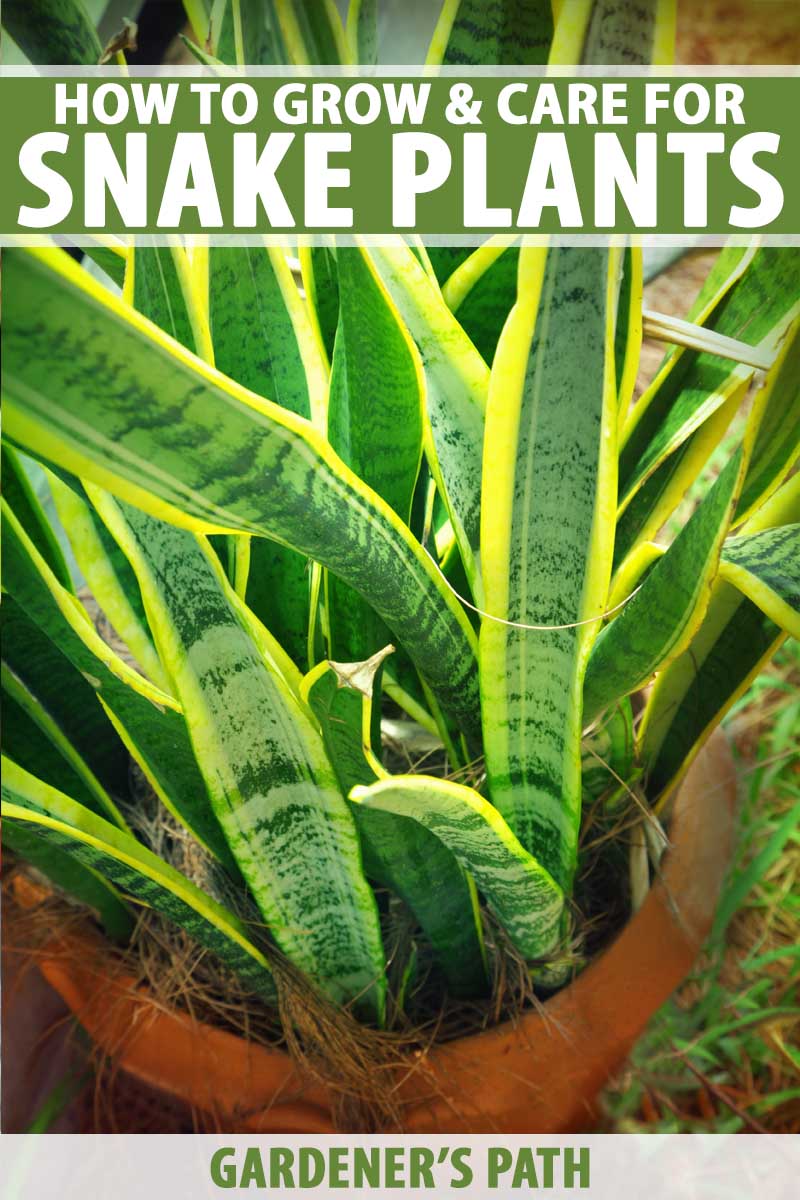
We link to vendors to help you find relevant products. If you buy from one of our links, we may earn a commission.
Heck, as I was putting this together I realized our readers don’t need a growing guide for Sansevieria.
All we need to do is to look at what we don’t want to do with a snake plant. Like many houseplants, it thrives on neglect and suffers from too loving a hand.
What You’ll Learn
Thrives on Neglect
Yep, that’s right. Snake plants don’t need a tender hand to prune their foliage, and they don’t want much to drink. They can tolerate deep shade and full sun, and they’ll even put up with a few nights of freezing temperatures.
It doesn’t need to be repotted often, either. My aunt had a colony of snake plants in every corner of her home and would never repot them until their root-bound rhizomes cracked their clay pots.
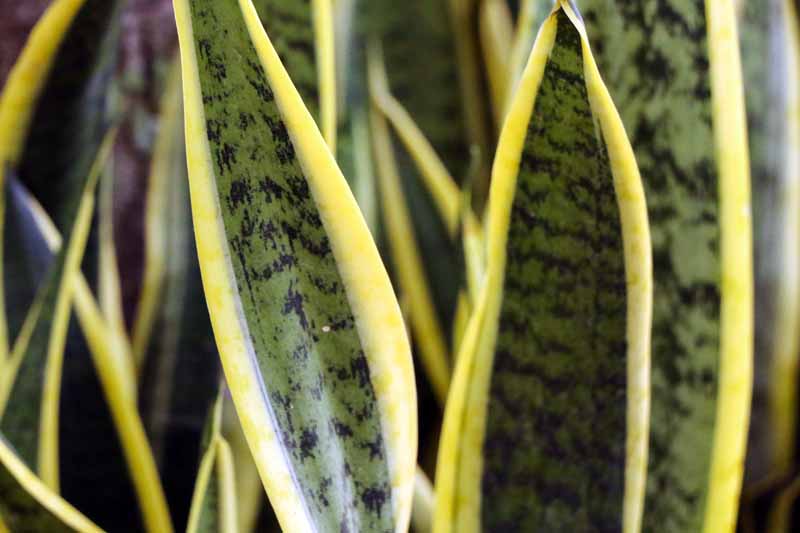
However, it’s worth noting that you can easily break the plant up and divide it into multiples, each ready for a new home as an individual potted plant.
This species thrives in poor conditions because they evolved in the jungles of the Congo. Despite being cradles of life and biodiversity, jungles tend to have very poor soil quality. That’s because those minerals and nutrients are locked up inside the overwhelming amount of greenery.

Costa Farms 12-Inch Snake Plant via Amazon
Snake plant wants a cramped, poor quality home to mimic the soil conditions of its native habitat.
Care and Water Requirements
My wife loves the houseplants decorating our home, and she’s got an artful hand when it comes to propagating clones from our established greenery. But she’s given up the duty of watering our indoor foliage to rest squarely on my shoulders.
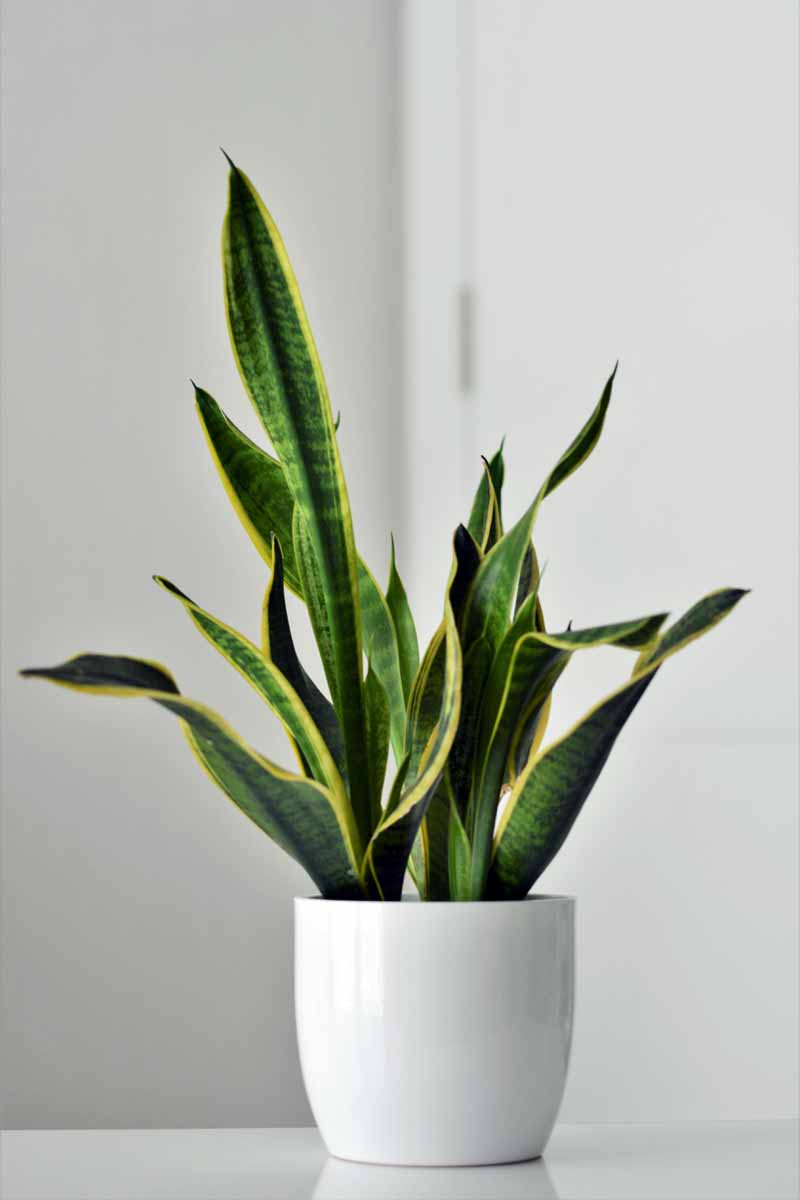
Many of the houseplants we’re familiar with need an articulate watering schedules to ensure their best health. But even a schedule of “once or twice a week” could stretch out into several weeks without a drink if conditions are right, and that’s where a watchful eye comes into play.
But snake plants? Nah, they’ll get by. You could toss one into a closet during the winter and forget about it until you stumble on it during your spring cleaning. Guarantee you’ll find the plant in the same condition.
Sansevieria is very easily overwatered during the winter. I give mine a little splash of water every few weeks during the winter, just enough to keep the soil from cracking too much, but that’s it. Snake plants thrive on ounces of watering during the entire winter, and too much will easily waterlog and rot them.

Costa Farms Snake Plant with 6.5-Inch Wide Planter via Amazon
During the warmer months you can still get away with watering the plant every few weeks, sometimes stretching out over a period of a month between drinks.
The exact timing between watering depends on the conditions of where you’ve got your container situated. Sunnier locations during very warm periods of the summer will dictate more regular watering, but a snake plant tucked into a shady corner can go for weeks without needing a drink even during the summer.
I’ve never fertilized my collection and they seem to be happy as can be, but if you’re interested in giving them a bite to eat you can! I’d suggest using applications at half the recommended rate and at half the frequency. If a fertilizer suggests one ounce of material applied every two weeks, I’d go with half an ounce once every four weeks.
Never fertilize them in the winter, or they’ll really suffer from it.
Why So Little Water?
It’s because snake plants are one of the few species that have evolved a metabolic process known as crassulacean acid metabolism.
Plants exchange gases through their stomata and release water vapor in the process. For many plants their stomata can be opened or closed as a reaction to the environment, but Sansevieria opens its stomata only at night to conserve water.
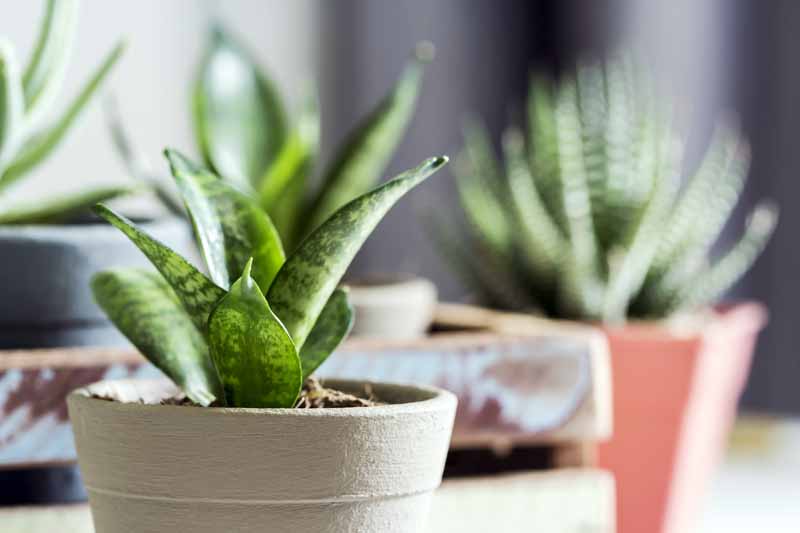
However, that process of gas exchange is often called a “necessary evil” for plants. Plants use very little water in their metabolic processes and expel as much as 95% of it through this process of transpiration. But snake plants?
Their stomata are open only at night, which means they hold onto water far longer than your other houseplants. If we provide too much for them to drink they become waterlogged and begin to rot.
Give Me Light! Or Don’t, Whatever
Many homeowners have a few really great windows for plant growth, but an abundance of locations in the home without adequate light to grow most houseplants.
While a good number of houseplants enjoy the shade and many enjoy bright light, few thrive under any light condition at all the way Sansevieria does.
You can throw these guys in full sun or deep shade conditions and they’ll keep on truckin’ all the way.
Something’s Bugging Your Sansevieria?
The only pests I’ve seen bother snake plants are mealybugs and spider mites, both annoying pests but not terribly difficult to control. I’ve become reliant on a spray bottle with rubbing alcohol inside for spritzing on plants with pest problems, but chemical solutions work too.
If you position the snake plant in chilly temperatures for too long it could develop scarring on its leaves. I’ve found this condition to be largely cosmetic and not something that needs to be rectified, but if you want your plant neat and tiny you can snip away browned tips on leaves.
Most of the conditions aside from a handful of pests and scarring from cold weather are caused by too much water or moisture on the plant. In fact it’s the only way a snake plant could be considered “sensitive”. Always err towards underwatering and you’ll find more than half of the conditions afflicting Sansevieria eliminated.
But Wait, There’s More
One of the fringe benefits of growing an easy-to-care-for houseplant like this is that it’s quite beneficial to the air quality of any indoor space. The NASA Clean Air Study tested a variety of familiar houseplants, and snake plant was found to remove four of the five toxins the study targeted.
Propagation
Propagating whole plants is easy. The plant responds well to a few different methods of cultivation to include leaf cuttings, root division, from offsets, from “pups,” and from seed.
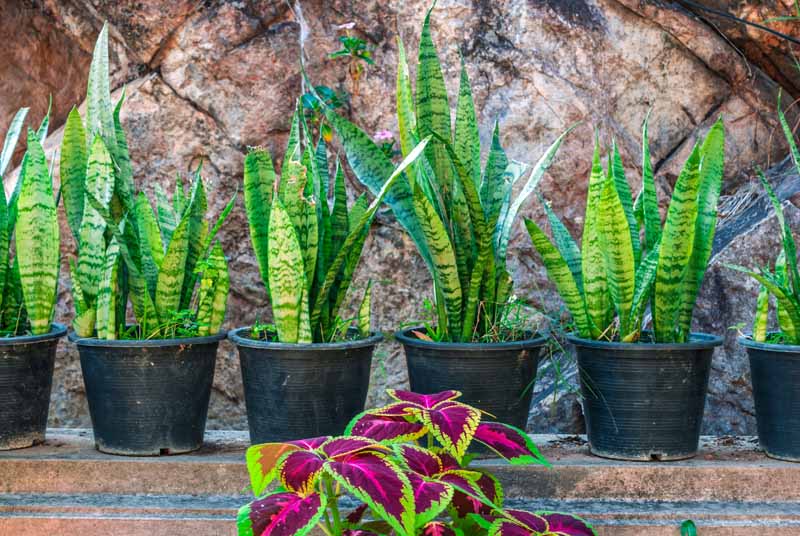
For more tips on this subject, check out our snake plant propagation guide.
Repotting
A lot of these guys will actually crack the pots they’re contained in, so don’t place it in one you’re too attached to. When it’s time to repot, it’s a similar scenario for other houseplants.
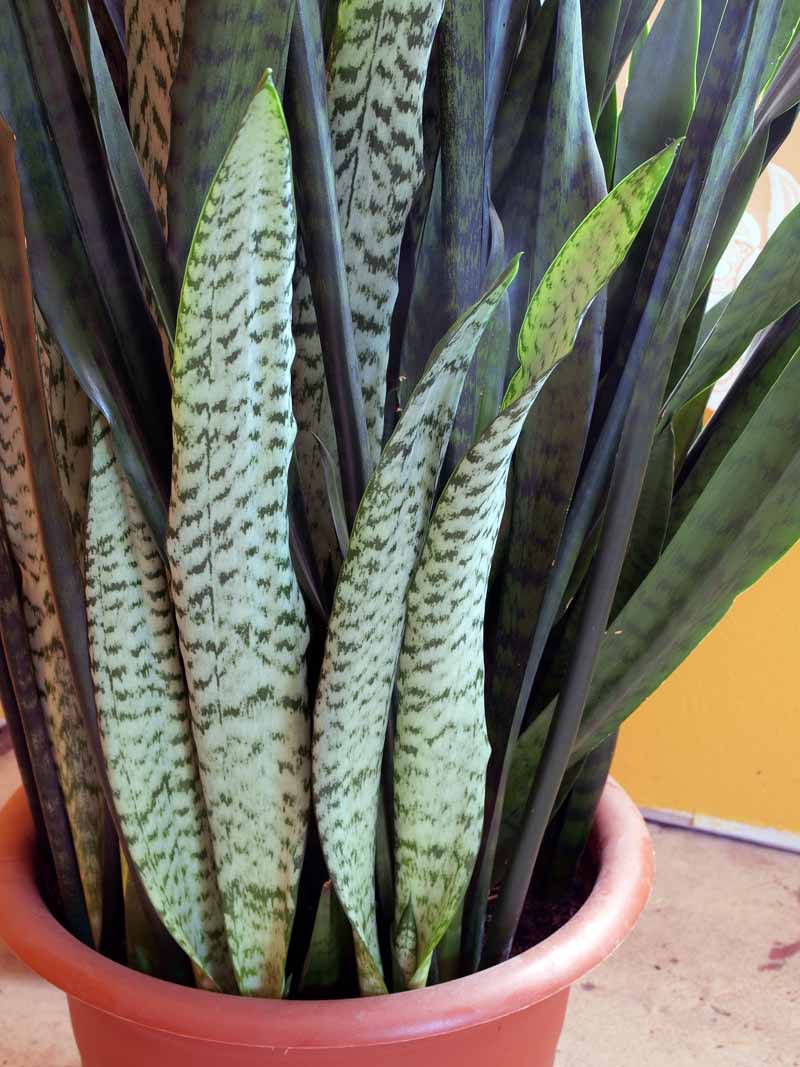
Remove the plant from the container and repot it into another container one size up; an 8-inch plant should go into a 10-inch pot, and a 10-inch plant into a 12-inch pot.
A potting mix for cacti like this one, available via Amazon, is a good choice to use when repotting your snake plant.
Common Snake Plant Types
You’ll find many different types of S. trifasciata for your tastes and preferences.
There are over 70 recognized subspecies of Sansevieria and hundred of varieties and cultivars of S. trifasciata (snake plant / mother-in-law’s tongue), but the selections below represent a few of the most common ones that you’ll be to find at your local green house or find online to order.
S. trifasciata
S. trifasciata is an all-green variant and my personal favorite. It’s more tolerant of deep shade than other varieties of snake plant. It certainly looks more like a snake than other varieties and is the original from which most other cultivars originated from. The leaves tend to be on the thinner side, but it seems to have a much more vigorous growth rate.

S. trifasciata Snake Plant, available via Amazon
The almost-mottled color is appealing but not striking and makes this plant perfect as a shapely accent plant without stealing too much attention from the others in the room. I’ve used these plants in dry, outdoor containers during the summer in Philadelphia and they take right to the conditions.
S. trifasciata ‘Laurentii’ (Golden)
The most recognizable variety is S. trifasciata ‘Laurentii,’ the yellow-edged and variegated snake plant.
In Zones 9 to 11 it can be grown outdoors. That vivid yellow is at its strongest in the sun and will grow less pronounced the more it’s in the shade.
S. laurentii superba (Golden Snake Plant) via Burpee
That yellow edge is really lovely and helps the plant pop visually when in a shady corner. My only hangup with this variety is how obvious any damage to the leaves becomes, but otherwise it’s a hardy and handsome plant. The leaves feel thicker and fleshier too.
S. trifasciata ‘Gold Hahnii’
‘Gold Hanii’ is a tiny version for cramped spaces and windowsills. I love this plant and find it to be as hardy and forgiving as its bigger cousins. The tiny, compact shape allows for multiple specimens in homes where every inch needs to count.

Green Sansevieria trifasciata ‘Hahnii’ – 4″ Pot via Amazon
You may be familiar with its nickname “Birdsnest” on account of how much it looks like… well, like a bird’s nest. Pairing these plants with hens and chicks and creeping thyme in containers is a surefire combination for hot and dry conditions.
S. trifasciata ‘Moonshine’
‘Moonshine’ has a very different look from other cultivars with its silvery toned upward pointing dagger shaped leaves. As a specimen, it can give a modern vibe and would work well with white, contemporary furnishings or mid-century modern.
‘Moonshine’ Snake Plant via Burpee
It can also lend to a bit of pop of contrast when set among other snake plant varieties while still keeping an overall theme of shape and form.
Check out our roundup of 21 of the best varieties of snake plants to grow at home for more options.
So Long, Sansevieria
Gotta love these guys! Easy to care for, difficult to kill, air purifiers, and readily propagated. What more could you ask for?
Sansevieria makes an awesome gift for people because of all of these attributes, and an excellent addition to your own menagerie.
While the snake plant is handsome on its own, maybe you’re looking for something a bit more colorful like the croton, or perhaps one of these non-toxic options for your home with pets that are just too curious?
We’ve also got our handy guide on the basic care of houseplants for your other questions about indoor gardening.
Thanks for reading, please share your tips and questions in the comments section below!
And for more house plant care tips, check out some of these guides:
- Reasons and Fixes for Snake Plant Leaves Curling
- How to Manage Invasive Snake Plants Outdoors
- The Best Tall Houseplants: 25 Tree-Like Plants to Grow Indoors
© Ask the Experts, LLC. ALL RIGHTS RESERVED. See our TOS for more details. Product photos via Bio Garden, Hirt’s Garden, and Burpee. Uncredited photos via Shutterstock.
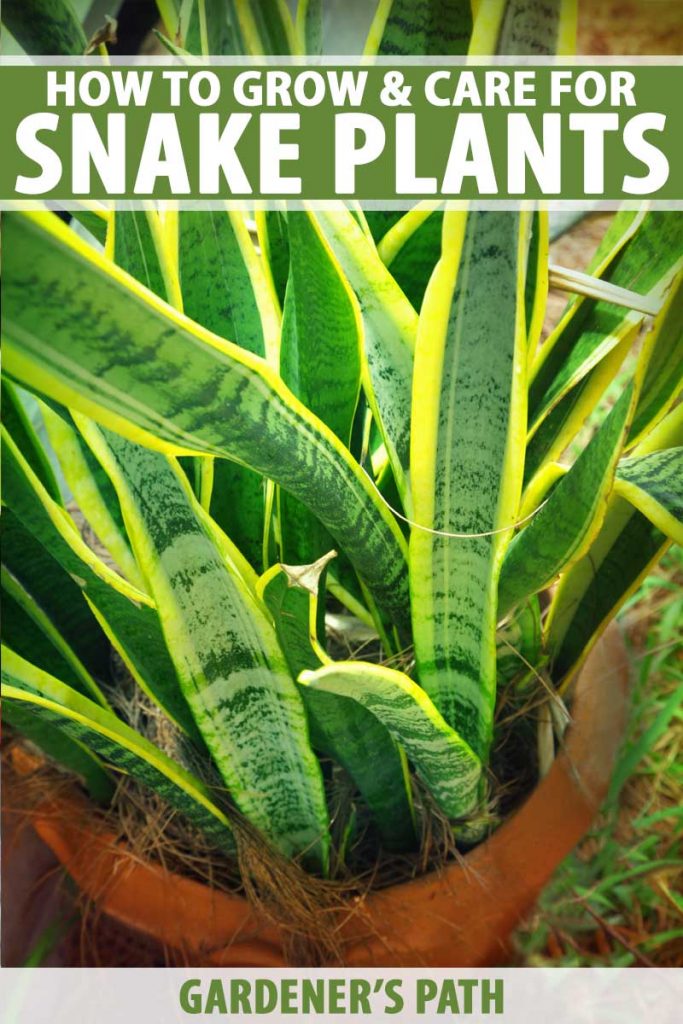
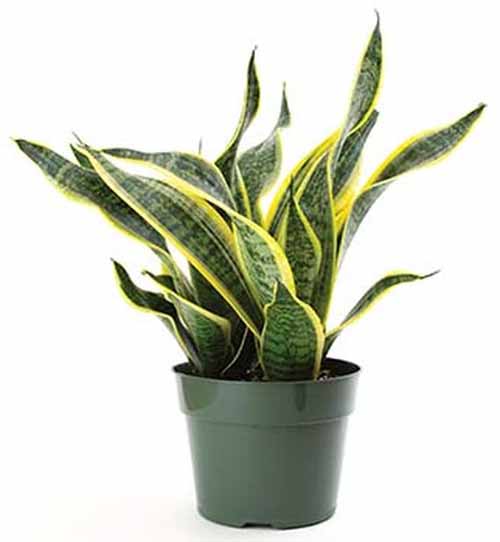
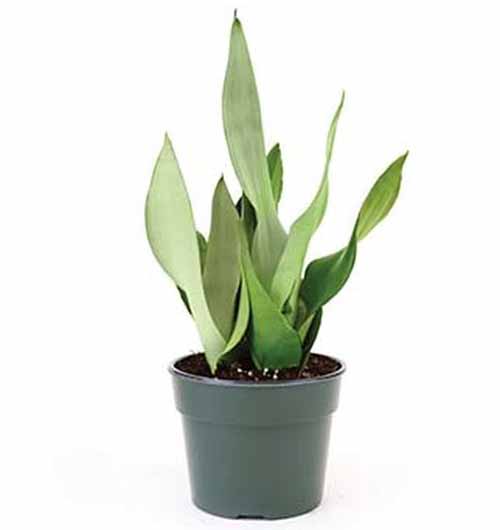
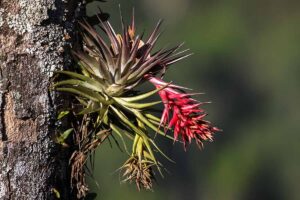

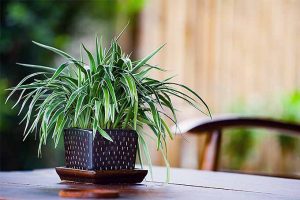
I love snake plants! This guide is great Matt. I like how you’ve focused on what not to do, as like you say, these plants will put up with a lot! I currently have a snake plant that’s sat in a north facing room, very far away from the window. It has lived there for 2 years maybe, and although its growth is a bit leggy (which I’m trying to counter/fix with a grow light), it’s still pretty happy. Because of it’s location I only water maybe once a month and that seems to work fine. Maybe you can help… Read more »
You’re probably not doing anything wrong, Kevin. If it has roots and looks happy, it’s just a matter of patience for it to produce more growth. You could give this young plant a little fertilizer, any houseplant fertilizer would do, at one-half strength. Remember that snake plants thrive in a root bound environment, so you probably won’t see your new plant taking off until it starts to really fill up that pot 🙂
Thanks very much Matt. I totally overlooked their preference to being root bound, so that would probably make a lot of sense. I’ll give it some fertilizer when I next water and be patient.
Good call, Kevin, and best of luck!
Hi Matt! I just got a snake plant from a friend and repotted into a cute planter that I’ve had waiting around for something to fill it; I put rocks in the bottom for air circulation (because I thought it might need that?) and filled the planter. Something feels wrong to me though, like this planter is too small for this beautiful plant and that I’m going to harm it since I moved it. Could you please offer me some advice on whether or not it will be okay in this pot? Should I move it back to it’s original,… Read more »
Adding rocks to the bottom of a planter is an excellent choice for drainage, but it looks like you’ve got some exposed roots at the top of the planter. Snake plants prefer to be slightly pot bound, but you need to have enough room to fully cover the roots. Perhaps this plant could be divided and you could keep just one portion in this pot, giving it a little room to grow.
Informative article! One thought: you might want to edit your fifth paragraph: “It’s worth nothing”… perhaps you mean “it’s worth noting”? Kind of opposite… ????
Thanks for the catch Anna!
Any idea what is growing on this Sansevieria? It grew right through one of its leaves and is pushing into another forcing the plant to appear like it’s spreading its leaves.
Hello RT Gilbert. I hope you’ll think this is good news, since they’re a source of free plants. Those are snake plant “pups,” offshoots that you can repot to become their own plants. So you’re not far off when you say they look like they’re pushing out new plants. The white part is where the new plant will sit along the soil line. It has orange rhizomes attached under the soil that will produce roots. To repot these pups, sever a portion with the offshoot and some orange rhizomes using a clean, sharp paring knife or kitchen shears. That’s it!… Read more »
This article was so helpful & informative. I have 4 snake plants and I believe they are thriving. I have one that is growing pretty wild and 2 that are smaller in size but after reading the article I see I have nothing to worry about and I can add fertilizer if anything. My concern is mainly for the wild child lol. The leaves that are leaning over I believe there are coming out the soil. They move around. Does she need to be repotted? Thank you for the advice ????
Hey, I bought these two Sansevieria from IKEA & was wondering, do these open? And grow into leaves or do they stay like this? ???? im curious as im unsure.
Hi Kevin, are you able to share a picture of your plants?
Hi
Can anyone tell me what’s wrong with my plant? I am brand new snake plant owner..so don’t know much.. seeking your help
Hey Niraj! Most of the time any issues experienced with snake plants have to do with watering (too much or too little) and sunlight. It looks like your plant is outside? It might be getting too much rain and causing some root rot issues. Alternatively it could be missing any water coming its way and really needs a drink. Check the soil and see how dry or wet it might be. If your snake plant is getting too much sun, that can cause issues, too. The wall behind the plant might be reflecting heat towards the plant, or it could… Read more »
I have several snake plants and all were looking great but now all of them have very droopy leaves.
They won’t stay straight. Is this caused by too much water? I moved them outside and repotted them in new soil and pots. There is 2-3 inches of free space around them.
Thank you
Unfortunately this is common with some tall varieties of snake plants, and overwatering may be the culprit. I’ve also seen it happen after plants are divided, if they are planted too shallowly, or when light conditions change. Was the soil oversaturated when you repotted, and how did the roots look? Be sure to always provide excellent drainage for these plants, and provide extra support as needed with chopsticks or bamboo. They may regain their strength in time.